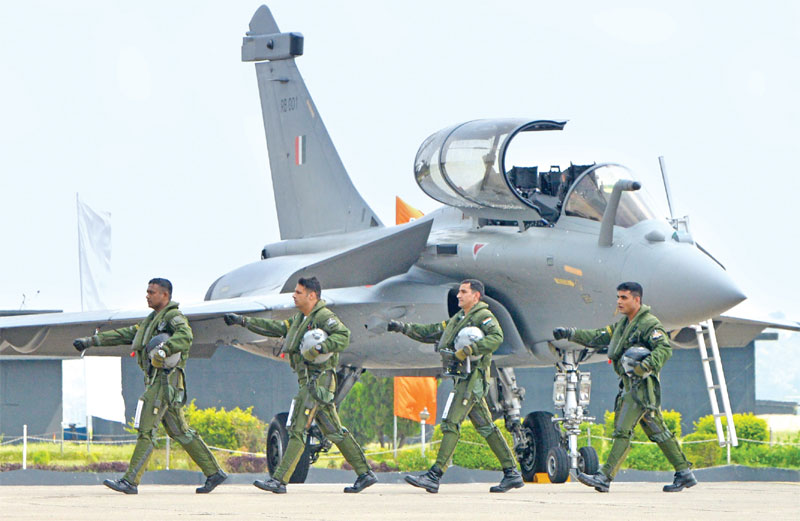Delayed inductions are making it difficult for the IAF to plan for its future force levels with any degree of certainty
Atul Chandra
The Indian Air Force (IAF) is in the midst of one of its most challenging periods, with a free fall in its operational fighter aircraft squadron strength coupled with rapid obsolescence of existing technologies, rendering some of its weapon systems seemingly ineffective on the modern battlefield.

The IAF is now down to less than 30 combat squadrons and continues to face challenges related to acquisition of additional fighters, trainers, light helicopters and mid-air refuellers. The looming decline has been further exacerbated by delays, which are now ‘de rigueur’ with defence procurement in India with nearly every major military aircraft or helicopter procurement impeded, depriving the service of inducting the latest technology.
Speaking during a 2016 lecture in Bengaluru, then chief of air staff, Air Chief Marshal B.S. Dhanoa had said that there was a stark difference between high-end and low-end technology in air combat and top of the line equipment is needed to win the depth battle. This makes it imperative for the IAF to have a healthy mix of state-of-the-art, modern and obsolete platforms, if it is to retain its combat edge.
Procurement Saga
The IAF envisioned the impending decline in its combat squadron strength, two decades ago, when it started looking at a replacement for its large MiG-21 fleet. About a decade ago, it appeared that the IAF was well on its way with its modernisation plans with the Medium Multi-Role Combat Aircraft (MMRCA) tender for 126 aircraft, along with what appeared to be a historic opportunity to jointly develop the Fifth Generation Fighter Aircraft and Multi-Role Transport Aircraft (MTA) with Russia.
Hindustan Aeronautics Limited (HAL) appeared poised to make the transition from license manufacture of 1970s era fighters such as the MiG-21, MiG-27 and Sepecat Jaguars to a state-of-the-art new fighter with the MMRCA programme and be deeply involved in the development of the FGFA. The MTA programme appeared to provide a logical leap from the 1980s era Dornier Do-228 license manufacture programme. The IAF would have benefited from two production lines of state-of-the-art fighter aircraft and an easier path for additional aircraft orders and upgrades, along with a modern transport aircraft to replace the 1980s era An-32.
Alas this was not to be, all three programmes were cancelled. The IAF had to content with 26 Rafales, instead of the 126 it sought a decade ago. Worse, it remains in search of 114 new fighter aircraft to fill in the void. The cancellation of the MTA programme could also mean that the IAF opting for the recently contracted Airbus CN-235 will not only replace the HS-748 ‘Avro’, but also the An-32 in future.
To meet the IAF’s requirement for larger numbers of modern fighters, which are essential to its future warfighting capability, the ministry of defence (MoD) issued a request for information (RFI) in April 2018, for 110 fighters (later increased to 114). The original requirement was for 86 single-seat and 28 twin-seat fighters, with a single squadron (18 aircraft) to be delivered as ‘fly-away’. The remaining aircraft were to be manufactured in India by the foreign OEM with an Indian partner.
You must be logged in to view this content.

